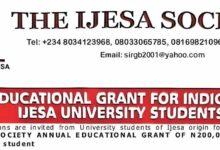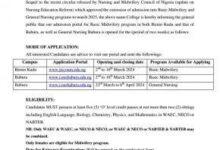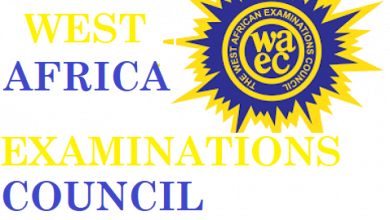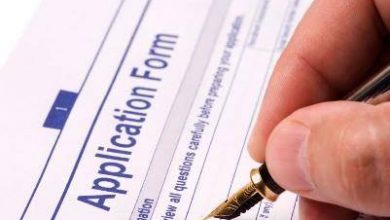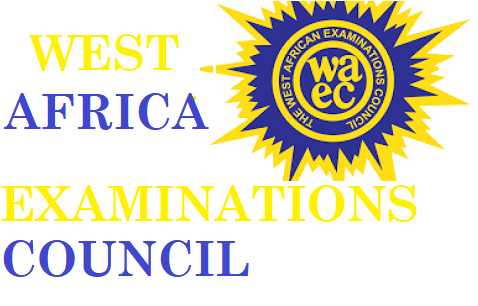
WAEC Syllabus for Metalwork
WAEC Syllabus for Metalwork. WAEC Syllabus for Metalwork is available for all candidates who want to participate in the examination. The West African examination council (WAEC) has officially introduced a syllabus that will guide all the WAEC candidates who wish to write the WAEC examination this year. For a very successful WAEC Metalwork examination for this year, you need to check out the available areas of concentration. It has been divided into sections with chapters, followed by the topics to be covered in preparation for the exams. In the WAEC Syllabus for Metalwork, you will also see the format of how the WAEC Metalwork questions will be presented. Jamb form
There are always 3 sections to answer questions from. Paper 1 is objective 2 and 3 contains essay questions. Where paper one (1) carries 50 marks and last for 50 minutes (2) carries 70 marks and last for 1 hour 40 minutes while paper three (3) carries 80 marks for 2 hours. WAEC Syllabus for Metalwork
👉 Relocate to Canada Today!
Live, Study and Work in Canada. No Payment is Required! Hurry Now click here to Apply >> Immigrate to Canada
This WAEC syllabus is for both the O’level WAEC and General Certificate Examination (GCE) candidates. Final year students in the senior secondary school level and external candidates are eligible to make use of this syllabus and prepare ahead of the examination. Dollar to Naira Rate
See the full detailed information concerning the WAEC Metalwork Syllabus below.
PREAMBLE
The examination is designed to test candidate’s skill in basic design, practical work and entrepreneurship. It will also assess their knowledge of tools, equipment and materials and understanding of those areas of creative thinking which can be expressed and developed through planning and working primarily on metals as part of general education. The test will also assess candidate’s competency in the fundamentals of manufacturing to pursue higher education in science and technology.
AIM
The aim of the syllabus is to test candidate’s acquisition of the requisite knowledge and skills needed to pursue further education and self-development in science and technology.
OBJECTIVES
Candidates will be expected to
(1) observe safe working practices in the workshop;
(2) demonstrate knowledge and understanding of tools, material and equipment;
👉 Relocate to Canada Today!
Live, Study and Work in Canada. No Payment is Required! Hurry Now click here to Apply >> Immigrate to Canada(3) apply basic processes for the care and maintenance of hand and machine tools;
(4) have ability in identifying, analysing and evaluating a problem;
(5) apply their knowledge of processes and materials to the solution of problems;
(6) demonstrate basic skills of good craftsmanship;
(7) apply knowledge of career opportunities in metalwork;
(8) have ability to translate an idea into a project design.
SCHEME OF EXAMINATION
The examination shall consist of three papers, Papers 1, 2 and 3, all of which must be taken. Papers 1 and 2 will be a composite paper to be taken at one sitting.
Paper 1: Will consist of forty compulsory multiple choice objective questions. Candidates will be allowed 1 hour to answer the questions. The paper will carry 40 marks.
Paper 2: Will consist of five questions out of which candidates will be expected to answer four in 1½ hours. The paper will carry 60 marks. All questions will carry equal marks.
Paper 3: Will be a practical test of 3 hours. 10 minutes shall be given prior to the commencement of the examination for the study of the drawings. The paper will consist of two questions out of which candidates will be expected to answer one. They will be required to make a test piece for which the appropriate drawings will be supplied. The paper will carry 100 marks. Schools will be required to supply materials that will be needed for the practical test.
DETAILED SYLLABUS
| TOPIC | THEORY | PRACTICALS |
|
1. General safety in the workshop. |
1.1 Potential sources of accidents. Measures to avoid accidents.
1.2 Personal safety. Safety clothings: goggles apron, gloves, bootswith hard toe caps, helmet. 1.3 Safety rules and precautions in a metal workshop.
|
|
|
2. Metals. |
2.1 Description of metals: physical and mechanical properties.
2.2 Types of Metals: -Ferrous metals: pig iron, wrought iron, cast iron and steels. – Non Ferrous Metals: aluminium, zinc, copper, tin and lead. – Non-ferrous alloys: brass, bronze, solders and duralumin. – Constituents and properties. 2.3 Uses of Metals: Construction of auto bodies, frames,structural members of building and bridges. – Selection of suitable metals for specific jobs.
2.4 Production of Metals – Types of metals and their ores: copper-pyrite, aluminium – bauxite, iron – hematite, zinc – calamine, lead – gelina,tin – tin ore (cassiterite) . – Methods of extraction: open pit and underground. – Processes of smelting and refining: Blast furnace, Bessemer converter, open-hearth, crucible, cupola electric arc and high-frequency induction furnace and reverberating furnace. – Forms of metal supply: billets, blooms and slabs. |
2.1.1 Identification: – file test. – spark test. |
| 3. Hand Tools and Bench Work.
|
3.1 Hand tools. – Hand tools: care and maintenance.
– Measuring tools: linear and angular. – Steel rule, angle plate and scriber, etc. – Bench vice, hand vice, G-clamp, chuck, etc. – Cold chisels, hacksaw, files, taps and dies. – Engineers’ hammers, mallets. – Screwdrivers, spanners, drifts, etc.
3.2 Benchwork – Filing, chiselling, threading and sawing.
3.3 Care and maintenance of tools – Need for maintenance.
|
3.1.1 Practical exercises involving the uses of handTools.
3.3.1 Practical exercises involving care and Maintenance – oiling, cleaning, greasing of hand tools. |
|
4. Heat treatment of metals. |
4.1 Importance of heat treatment of metals.
4.2 Heat Treatment processes. – Annealing – Case hardening – Hardening Pounds to Naira – Tempering – Normalizing
4.3 Materials and Equipment for heat treatment of metals. – Materials used as cooling media for heat treatment of metals:coal, brine, water, air, oil and ash. – Equipment: furnaces, pyrometer, oven quenching tanks, blacksmith forge, oxy-acetylene flame. Jamb Result
4.4 Tempering colours and temperature ranges. 4.5 Safety precautions. |
4.2.1 Heat treatment of hand tools.
4.4.1 Use of colour charts. |
|
5. Hand forging.
|
5.1 Principles of forging – Definition of forging – Importance of forging – Types of forging: cold, hot and drop forging.
5.2 Forging tools and Equipment. – anvil, hammer, top and bottom swages, hardies, fullers, tongs and heart forge.
5.3 Forging operations – fullering, upsetting, bending, drawing down, punching, flattening, cutting, twisting and swaging.
5.4 Safety precautions. |
5.3.1 Forging of chisels, centre punch, scriber, door bolts, hinges, hoes, pokers, etc. |
| 6. Foundry Work. | 6.1 Principles of Casting:
– Definition and importance of casting. – Method of casting: sand casting.
6.2 Materials and equipment for sand casting. Dollar to Naira Rate 6.3 Processes: pattern making (single piece, split and flat back), moulding, melting and pouring, dismantling and fettling.
6.4 Core making (box, sand). 6.5 Casting defects (types and causes) 6.6 Safety precautions. |
6.3.1 Mould making and metal pouring.
6.3.2 Simple pattern making.
|
|
7. Metal Joining
|
7.1 Types: temporary and permanent. – Temporary metal joining processes. – Explanation, identification and uses of common fasteners: Bolts, Nuts, Pins and Screws.
7.2 Soft Soldering – Tools and equipment. Types of joints and processes.
7.3 Hard soldering – Tools and equipment .Types of joints and processes. Procedure for making hard soldered joints. 7.4 Gas and Electric Arc Welding. – Welding equipment, welding operation, welding flames. Welding techniques and safety. 7.5 Riveting – Tools and equipment, types of rivets and joints. 7.6 Safety precautions. |
7.2.1 Design and make an artifact involving soft soldering. |
| 8. Sheet
Metalwork. |
8.1 Selection of materials,
– Low carbon sheet, galvanised sheet, tin plate, copper,aluminium and brass sheet. – Standard gauges.
8.2 Tools and Equipment: Npower Recruitment – Stakes, Hammers, Mallets, Snips, Hand lever, Shears, Folding bar, Sand bag and Slip roll.
8.3 Pattern development and cutting . – Methods of Pattern development: types, layout, and cutting out of patterns.
8.4 Basic Fabrication processes: Bending, Raising, Hallowing,Sinking, Expanding and Contracting.
8.5 Joints and joining – Types of joints: lap, grooves, seams. – Methods of joining: – Self – tapping screw. – Soft soldering. Waec Result – Seaming
8.6 Safety precautions. |
8.4.1 Production of simple articles e.g. cans, funnels and bowls. |
| 9. Machine Tools
and processes. |
9.1 Drilling, Drilling machines and reaming
– Description, types of tools and setting up. – Types of drilling machines: sensitive, pillar and radial. – Drilling faults & remedies
9.2 Grinding, Description of grinding operations.
– Types of grinding wheels and setting up of grinding operation.
9.3 Power sawing: Jamb form – Description, types of tools and machines. – Setting up of machinefor power sawing.
9.4 Lathe and lathe turning operations. – Parts and functions of the centre lathe: the bed, headstock, tailstock, carriage feed and thread cutting mechanism. – Operations on the centre lathe: parting off, knurling and taper-turning. – Work holding devices: 3 and 4 – jaw chucks, collets, face plates, catch plates and mandrels. other accessories, steadies and centres.
9.5 Shaping Machines – Types of shapers: swivel, tilting and universal table – Parts of a shaping machine and their functions Pedestal, ram, saddle, table and driving mechanism. – Cutting tools materials and holders.
9.6 Cutting lubricants and coolants (soluble oil, straightcutting oil, soda solution).
9.7 Care, maintenance and safety precautions. |
9.1.1 Exercises on drilling machine:
drilling, reaming, countersinking and counterboring.
9.2.1 Grinding of single-point tools, e.g. scribers, chisels and lathe tool bits.
9.3.1 Using the power saws to cut materials for projects.
9.4.1 Operation sequence, exercises involving step turning, drilling, boring, taper turning, knurling, vee thread- cutting and parting off.
|
|
10. Finishes and decorative processes. |
10.1 Types of finishes and decorative processes – polishing and buffing, spot facing, planishing, colouring, plating, etching, lacquering, pickling and enamelling
|
10.1.1 Application of finishes on projects. |
| 11. Design.
|
11.1 Identifying the Problem
– Problem areas: market, classroom, lorry park,workshop. – Problem definition:benefits to be derived from finding solution(s) to the problem identified.
11.2 Generating possible solutions – Investigation procedures and possible solutions: interviews, observation, visits, reading journals, books, photographs, sketches of solution alternatives. – Generation of possible solution. Selecting the best solution by: simplicity/ complexity, availability of materials and cost. – Freehand sketching, working drawings, prototype, testing and production.
|
11.2.1 Produce a folio and realise the artifact. |
LIST OF MATERIALS AND EQUIPMENT FOR METAL WORK WORKSHOP
Recommended workshop size:
Purpose-bulk 14m length x 8m width x 4m height, well ventilated and illuminated.
Safety Equipment and Materials;
Fire extinguishers, first aid box, buckets of sand, CO2 wall charts etc.
- Workshop Tools
(a) Cutting tools: Hacksaw, drills, chisels, snips, files, stock and die, scrappers, reamers, turning tools, milling machine, shaping tools.
(b) Measuring tools: Steel rules, inside and outside callipers, combination square, micrometer screw gauges,verniergauges, vernier protractors, spirit level, dial gauges.
(c) Marking out tools: Surface gauge, surface plate, try square, vee-block, dividers, odd leg callipers, trammels, straight edge, scriber, angle plates, centre punches.
(d) Driving tools; pin punches, screwdrivers, hammers, drifts.
(e) Work holding devices: clamps, vices, pliers, mole grips, self gripping wrenches.
(f) Forging tools: hardies, fullers, tongs, swages, anvils, anvil stands, letter stamps and stakes, sand bag. Jamb form
- Workshop Equipment
Work benches, marking out table, blacksmith’s hearth, foundry furnace, sets of tool boxes, oil cans, computer hard ware and soft ware.
- Machine Tools
Centre lathe(with accessories), sensitive and pillar drilling machines, pedestal grinder, power hacksaw, folding machine, shears, rolling machine, milling, shaping machine, etc
Welding Equipment
Standard arc welding machine accessories, electrodes, shields, aprons, chipping hammers, welding boots, standard oxygen and acetylene cylinders, filler rods, spark lighters, regulators, nozzles, etc.
Materials
Mild steel round bars (03mm – 050mm), Flat bars (of different sizes), Square bars, Hexagonal bars, Mild steel sheets and plates, Galvanized and tinned sheets. Projects may be constructed with non-ferrous metal e.g. Copper, Aluminium and Brass.
RECOMMENDED TEXT BOOKS
- Workshop Technology (parts 1 and 2) – W.A.T. Chapman
- Metalwork Technology – G. H. Thomas
- Metal Technology – C. E. S. A. C.
- Introductory Technology – C. E. S. A. C.
- Welding Technology – Gourd
- Mechanical Engineering practice – A. Green and W.H. Howe
- Crafts Theory and Related Studies – R.T. Pritchard Vol. 1 & 2
- Mechanical Engineering – R.I. Timings
- Metalwork Theory, Books 1, 2, 3, & 4 (Metric Edition) – P.F. Lye – Harrap, Lon
- Design Technology in Metal and Plastics (Metric Edition) – G.H. Thomas-John Murray
- Jab Metalwork Projects for African Schools and Colleges – R. Edward – Cassel Lon
- Basic Engineering Processes – S. Crawford
- Metalwork – R. Sandham & F.R. Willmers
- Workshop Processes and Materials – J. V. Courtney
- Metalwork Projects and Theory (S.I. Units) – K. Parkinson
- The Theory and Practice of Metalwork
(3rd Edition) – G. Love
- Metalwork for Schools and Colleges – J. N. Green
- Metal Cutting Machine tools – Adejuyigbe, S. B.
- Metalwork Technology – J.K.N. Sackey
- K. Amoakohene.
Check and Confirm: How much is Dollar to Naira Pounds to Naira Rate Today


